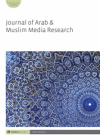
Full text loading...
 , Megara Tegal2
, Megara Tegal2
This article focuses on the potential of memes as apparently innocuous communicative digital tools to spread gendered Islamophobia. Following Segev et al.’s (2015) theories of meme families, we studied a corpus of 100 memes retrieved from popular internet meme sites from 2017 to 2021. We applied the principles of multimodal discourse analysis to analyse Shifman’s three dimensions of memes (content, form and stance) and described a large sample of memes, categorizing them into three popular tropes of Muslim women found in literature and electronic media. Our findings revealed that most misogynistic Islamophobic memes characterize Muslim women as oppressed by their own community. A smaller degree of memes portrays Muslim women’s bodies as sexualized and assailable, and finally very few memes depict them as terrorists. We contend that internet memes can be a powerful and efficient means to disseminate vitriolic rhetoric in a subtle and camouflaged way leading to the trivialization and, eventually, acceptance of their hateful discourse.

Article metrics loading...

Full text loading...
References


Data & Media loading...

Publication Date:
https://doi.org/10.1386/jammr_00063_1 Published content will be available immediately after check-out or when it is released in case of a pre-order. Please make sure to be logged in to see all available purchase options.